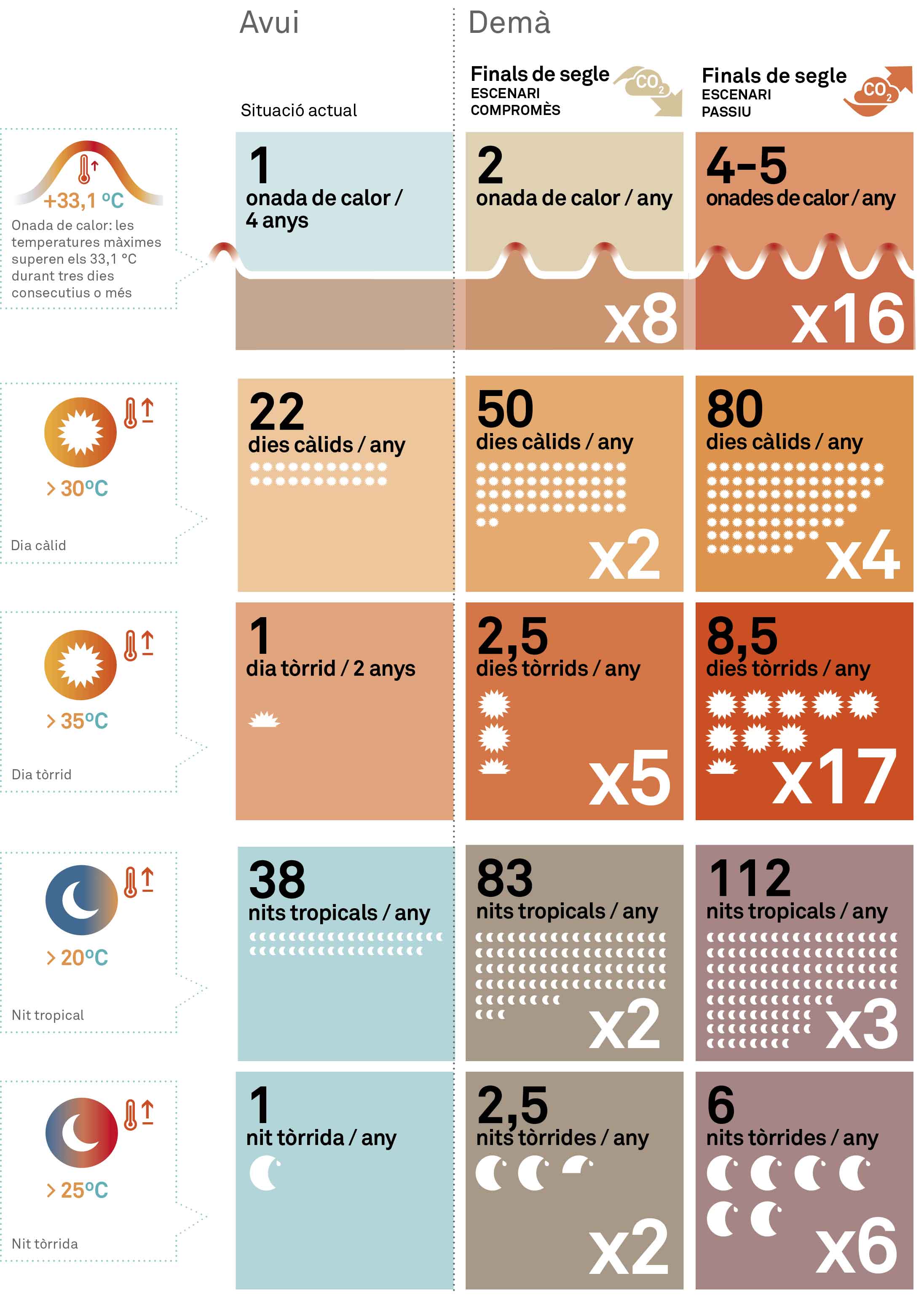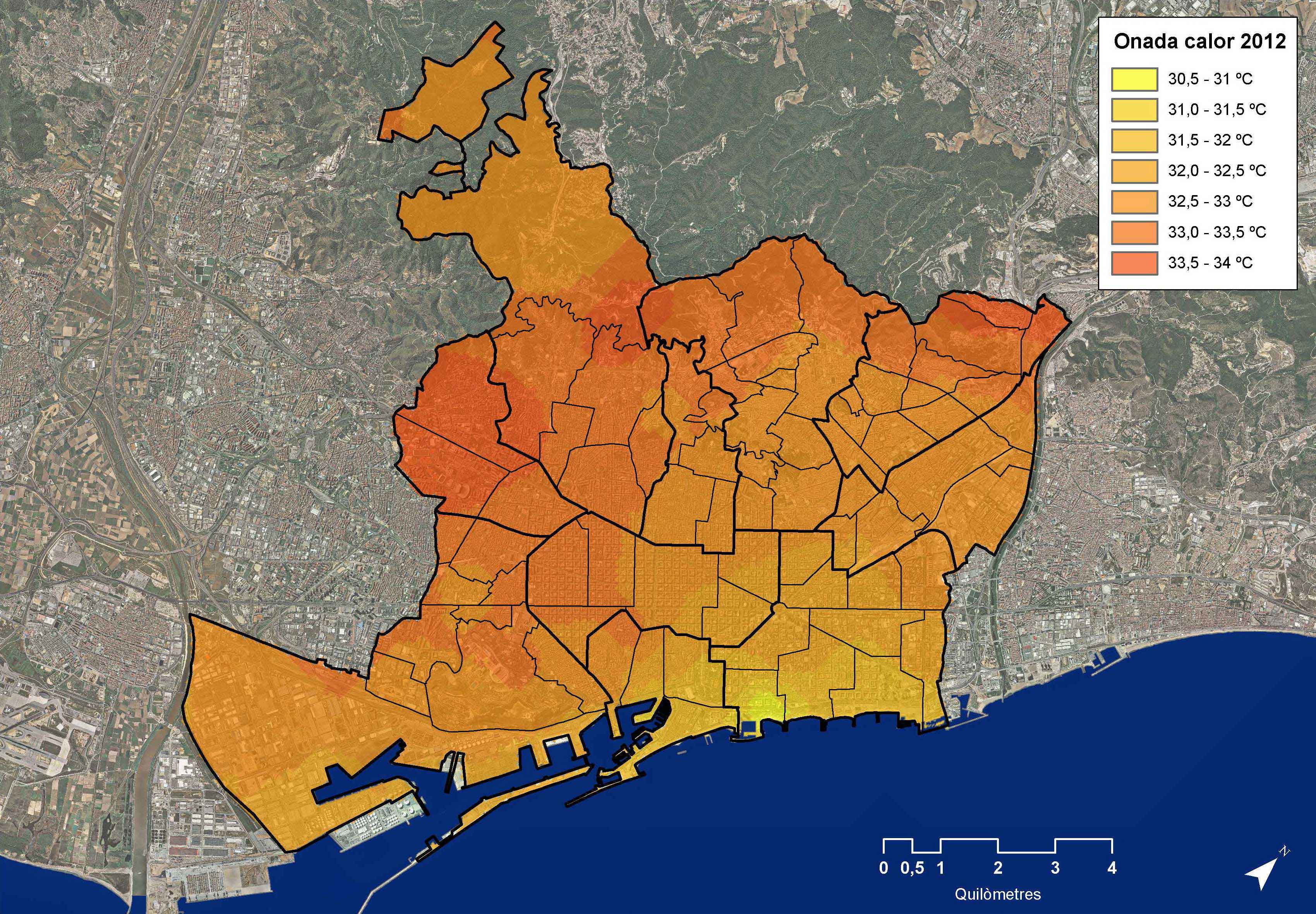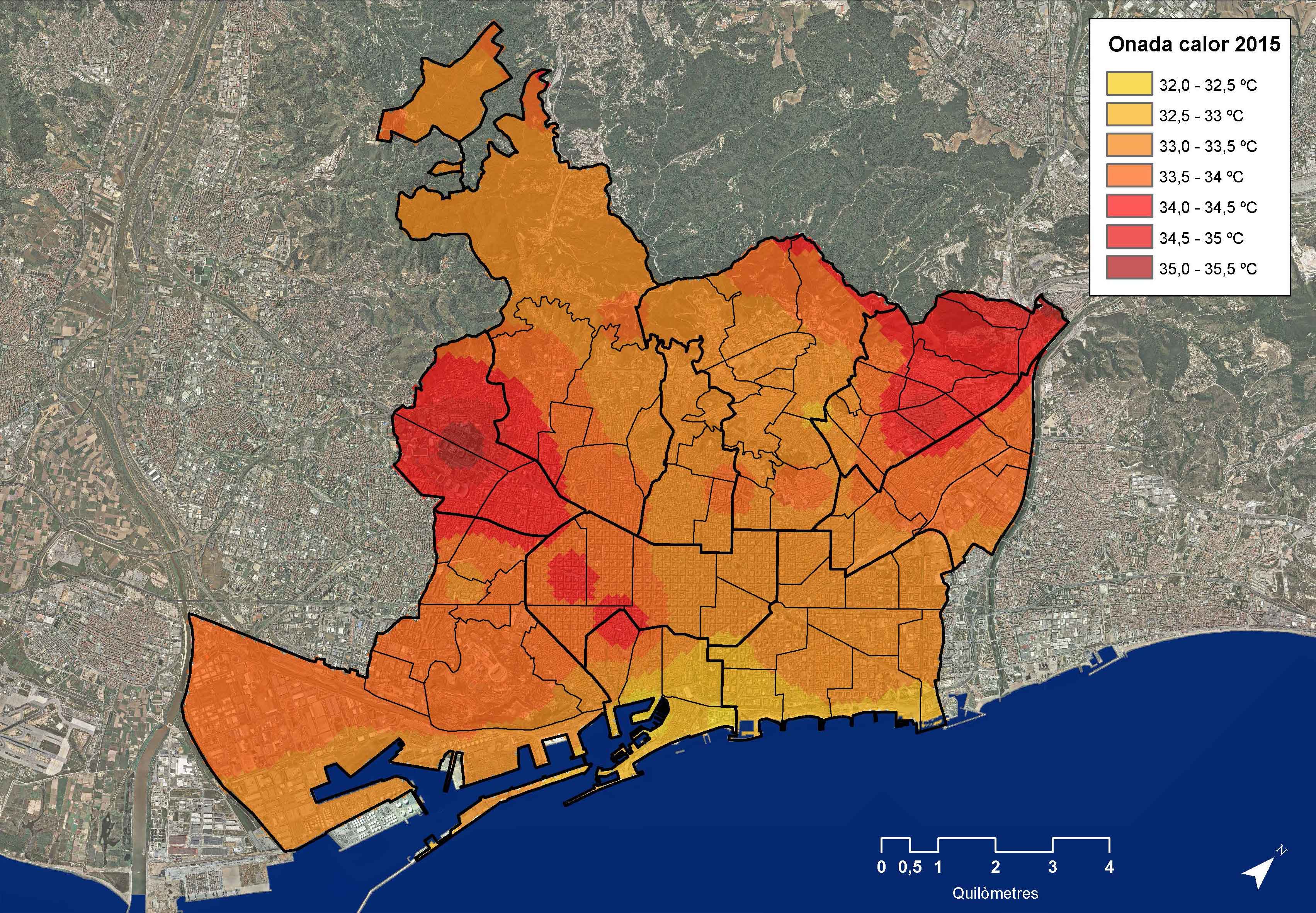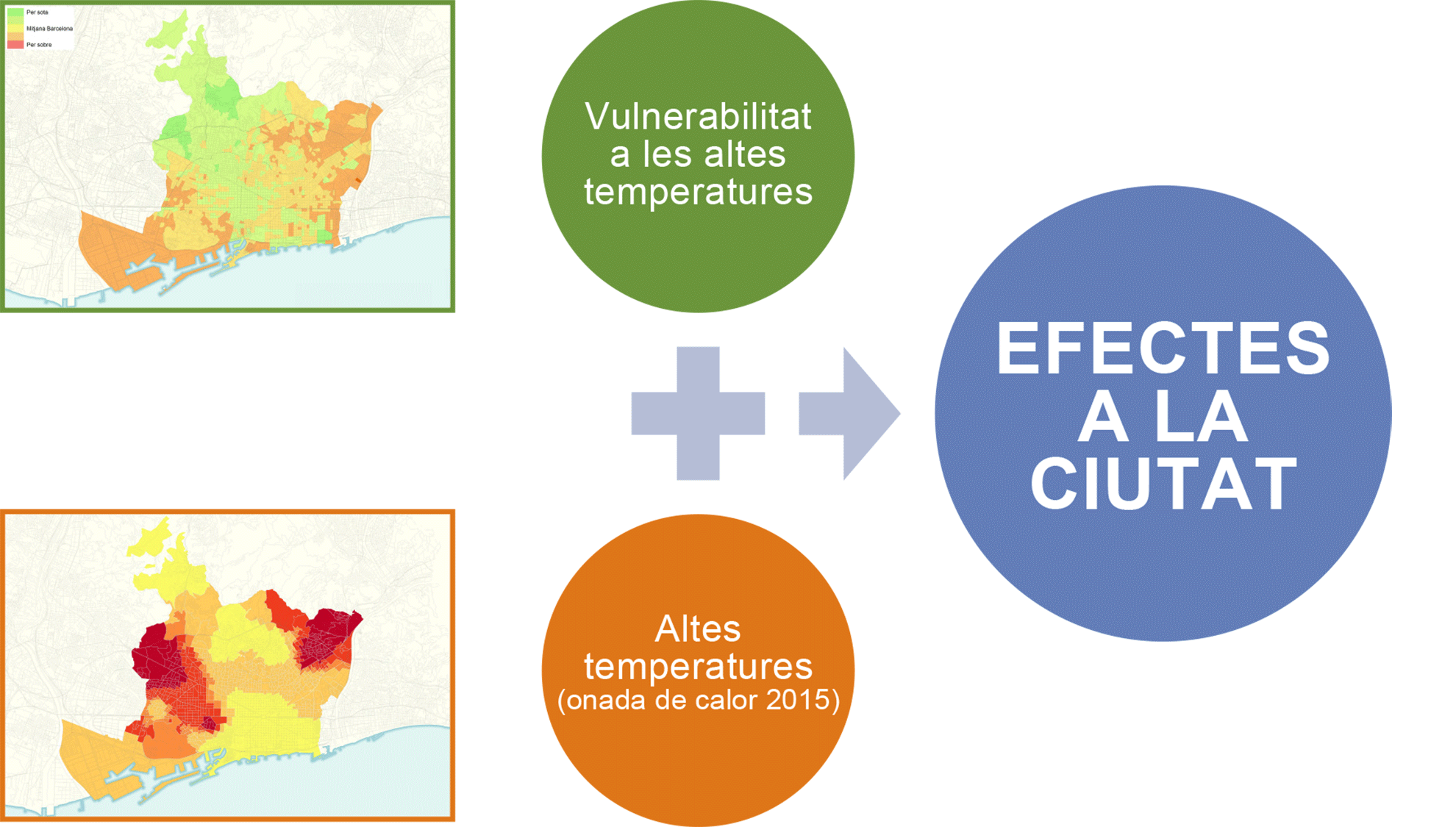Adaptive capacity
Although climate change will increase the intensity and frequency of heat episodes, this is not a new risk for Barcelona and the city is already applying measures to combat their effects on health. The combination of these measures and the city’s characteristics that make it resistant to heat is what we call adaptive capacity.
The Specific Municipal Emergency Plan for Heat Waves is one measure and there are other structural measures that are now beginning to be implemented, such as increasing the quantity and quality of urban greenery in the city, as this provides shade and coolness with the temperature falling up to 3ºC in some parks, or encouraging energy renovation to improve the thermal comfort and characteristics of buildings and public facilities.
The Climate Plan is pushing a new line of action called “Climate shelter spaces” to promote the creation or adaptation of spaces that people could be directed to in the event of heat episodes. The Study on the Impacts of Climate Change in Barcelona included an initial analysis of the facilities and green spaces in the city that it was felt could offer this service, with the aim of getting an initial idea of the extent of territorial cover of potential shelters in relation to the vulnerable population. Work is currently being done to go into more detail with this study.
For further information on this and other measures, you can consult the contents of the Climate Plan:

Climate shelter spaces and facilities
It is important to know which places the most vulnerable population can go to when there is a heat wave to protect themselves from its effects. To carry out an initial study of the extent of territorial cover for vulnerable people (over 75) provided by the current potential shelter spaces, we chose public facilities with a big capacity that might have better climate comfort conditions because they have air conditioning or other cooling features.
The following shelter facilities were considered:
- Public libraries
- Sports complexes*
*It is worth pointing out that some sports complexes do not have air conditioning and, therefore, would not be the most suitable places for sheltering people at times of high temperatures. But there was no information available on-air conditioning in these complexes for the study, so they have all been included. Subsequently it will be necessary to refine this analysis, so we know which shelter facilities are the most suitable.
However, Barcelona also has other amenities that could serve as a reception point for people at the hottest times, namely the city parks. We chose the ones with a notable presence of greenery and which cover a relatively big area (over 1 ha).
The map shows the degree of territorial cover provided by parks and potential shelter facilities measured by walking time up to 10 minutes.
Source: Study of the Impacts of Climate Change on Barcelona carried out by Barcelona Regional.
Shelter capacity of shelter spaces for the vulnerable population (over 75)
We also analysed the degree of “saturation potential” of theses parks and shelter facilities, that is their capacity for sheltering the most vulnerable population (over 75) in their vicinity, taking into account the area established for each of these spaces is 10 minutes walking distance. The map uses colour grading where the areas highlighted in red and orange have a very high potential vulnerable population (more than 2000 people over 75).
Source: Study of the Impacts of Climate Change on Barcelona carried out by Barcelona Regional.




